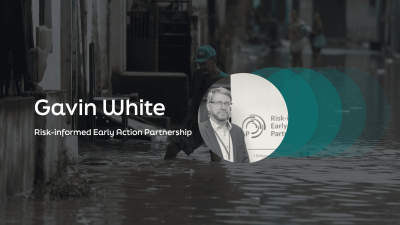
Improving access to redress for workers vulnerable to violence and harassment in South Asia
Experts discuss the factors that make some workers more vulnerable than others to violence and harassment.
This page is approximately a 5 minute read
This page was published on

Household surveys provide fascinating insights into our individual concerns, fears and hopes across social groups and contexts. The latest World Risk Poll resilience report is no exception, but it does it at a massive scale, looking at perceptions of risk across 142 countries.
The questions it helps to answer are broad. With the progress of technology and the growing impacts of climate change, is the world becoming safer or more dangerous? Who is doing better and who is doing worse? Does that depend on individual or collective circumstances?
These are not secondary questions: In 2023, 30% of people worldwide said they had personally experienced a disaster related to a natural hazard in the past five years, up from to 27% in 2021. The World Risk Poll provides some initial answers – while highlighting many other questions that will require more research. Its measurement of people’s preparedness includes 10 indicators that tie to perceptions of risk, such as individual agency and community cohesion.
Not surprisingly, the survey confirms that society’s most vulnerable are also those with the lowest Resilience Index scores: those over the age of 50; the unemployed; people living in households whose earnings fell in the poorest 20% of their country’s income distribution; and more generally people living outside the OECD countries.
The report also confirms that a number of countries that have experienced recent profound shocks suffered some of the largest decreases in the Resilience Index on the community and societal resilience dimensions.
The report’s specific examples offer deeper dives to help understand what can undermine our perceived coping capacity. Ecuador and Morocco, for instance, saw the most significant declines (seven points each), but for very different reasons. Since the previous World Risk Poll in 2021, Ecuador has been gripped by a sharp increase in drug-related gang violence, homicides and political assassinations, while Morocco experienced a large earthquake in September 2023. But the survey also flags that each country is different. The decline in Morocco’s index is due to a decline in individual and household resilience. But other countries have had different experiences, given the country’s internal systems and household preparedness. Pakistan and New Zealand also experienced major disasters (flooding) during the same period, but it is the community and societal results that declined, while individual and household resilience remained stable — an inverse of what happened in Morocco.
The report shows that higher-income countries are typically (but not always) more resilient than lower-income countries overall. But low-income countries are often stronger in specific aspects such as community cohesion.
For disaster risk reduction practitioners specifically, there are a few interesting nuggets in the report. For instance, at a global level, findings support existing academic literature that suggests a link between surviving a disaster and being more prepared to face one in the future… though that preparedness does not necessarily translate into increased confidence in one’s capacity to protect oneself and one’s family from a future disaster. Knowing what to expect can often make one humbler as to one’s ability to manage a crisis!
Some country-level results may initially come as a surprise. Burkina Faso, Russia, Kyrgyzstan and Ukraine all saw increases of at least four points on the index. All four of these countries experienced some form of conflict-related instability in 2022, with Burkina Faso experiencing two coups, Russia invading Ukraine, and Kyrgyzstan fighting a border conflict with neighbouring Tajikistan. This deserves further inquiry.
Perhaps just as interesting as these findings are the unaddressed questions raised by the data on which the report does not speculate. The report documents some of the greatest changes in the Resilience Index, but it doesn’t fully explain why all these changes may have occurred. For instance:
These questions may provide very helpful insights to guide national-level analyses. For instance, while Lebanon is widely acknowledged to have a weak government, this has led its population to adopt strong coping strategies at community, household and even individual levels – families can go days without the provision of electricity or water from the public utilities and they rely on strong community and religious networks to survive through conflicts and crises that no household in a wealthy economy would know how to deal with. Are crises therefore good for resilience?
Perhaps the greatest value of this report – and of the World Risk Poll more generally – is to provide a baseline against which to measure future changes. While changes over a two-year period may be due to contextual shocks (such as a conflict, a change of national leadership or the international price of grains), future surveys will provide further insights into the most important factors in individual and household levels of preparedness and confidence, as well as the strength of local infrastructure, networks and mutual community support. At REAP, we’re already looking forward to the future iterations of this report!